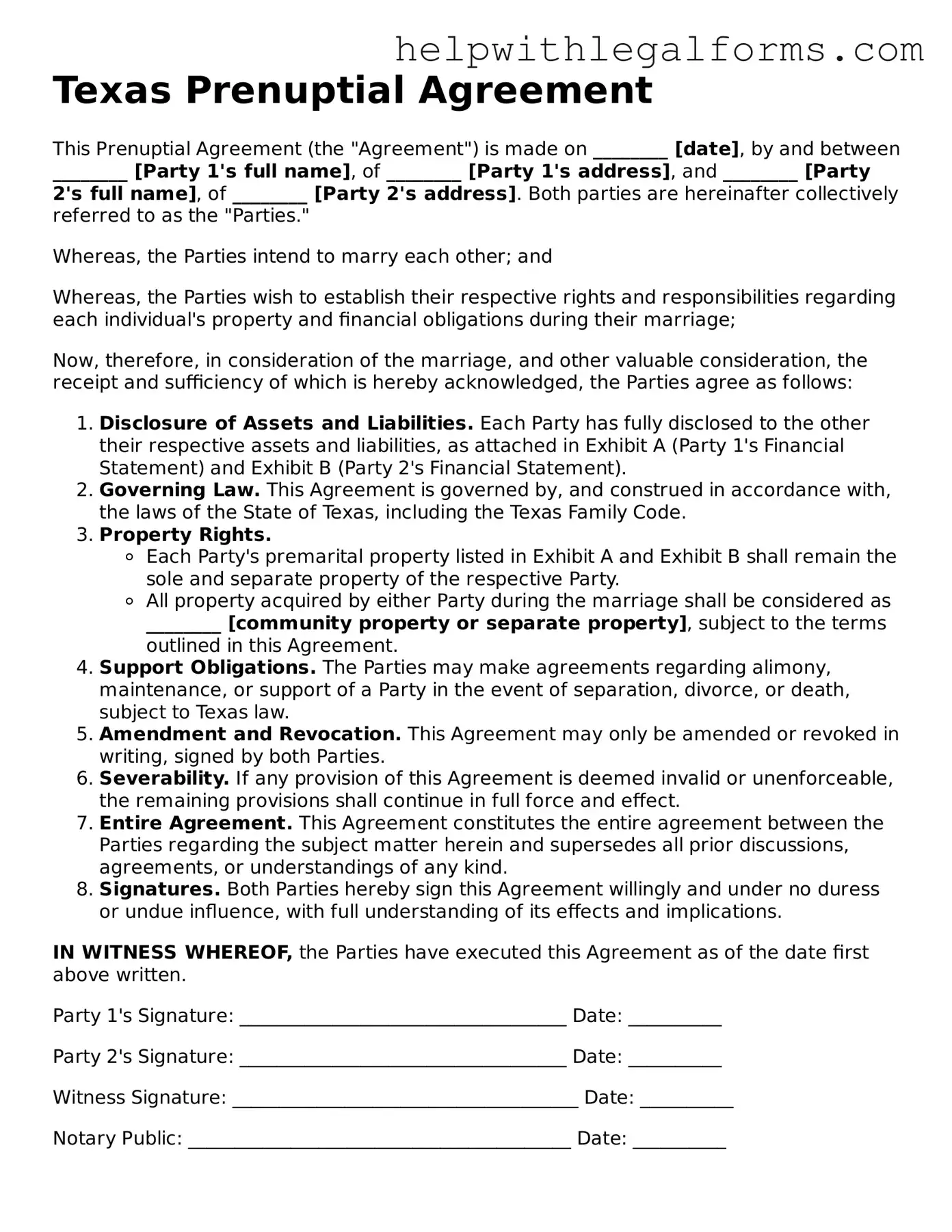Texas Prenuptial Agreement
This Prenuptial Agreement (the "Agreement") is made on ________ [date], by and between ________ [Party 1's full name], of ________ [Party 1's address], and ________ [Party 2's full name], of ________ [Party 2's address]. Both parties are hereinafter collectively referred to as the "Parties."
Whereas, the Parties intend to marry each other; and
Whereas, the Parties wish to establish their respective rights and responsibilities regarding each individual's property and financial obligations during their marriage;
Now, therefore, in consideration of the marriage, and other valuable consideration, the receipt and sufficiency of which is hereby acknowledged, the Parties agree as follows:
- Disclosure of Assets and Liabilities. Each Party has fully disclosed to the other their respective assets and liabilities, as attached in Exhibit A (Party 1's Financial Statement) and Exhibit B (Party 2's Financial Statement).
- Governing Law. This Agreement is governed by, and construed in accordance with, the laws of the State of Texas, including the Texas Family Code.
- Property Rights.
- Each Party's premarital property listed in Exhibit A and Exhibit B shall remain the sole and separate property of the respective Party.
- All property acquired by either Party during the marriage shall be considered as ________ [community property or separate property], subject to the terms outlined in this Agreement.
- Support Obligations. The Parties may make agreements regarding alimony, maintenance, or support of a Party in the event of separation, divorce, or death, subject to Texas law.
- Amendment and Revocation. This Agreement may only be amended or revoked in writing, signed by both Parties.
- Severability. If any provision of this Agreement is deemed invalid or unenforceable, the remaining provisions shall continue in full force and effect.
- Entire Agreement. This Agreement constitutes the entire agreement between the Parties regarding the subject matter herein and supersedes all prior discussions, agreements, or understandings of any kind.
- Signatures. Both Parties hereby sign this Agreement willingly and under no duress or undue influence, with full understanding of its effects and implications.
IN WITNESS WHEREOF, the Parties have executed this Agreement as of the date first above written.
Party 1's Signature: ___________________________________ Date: __________
Party 2's Signature: ___________________________________ Date: __________
Witness Signature: _____________________________________ Date: __________
Notary Public: _________________________________________ Date: __________
